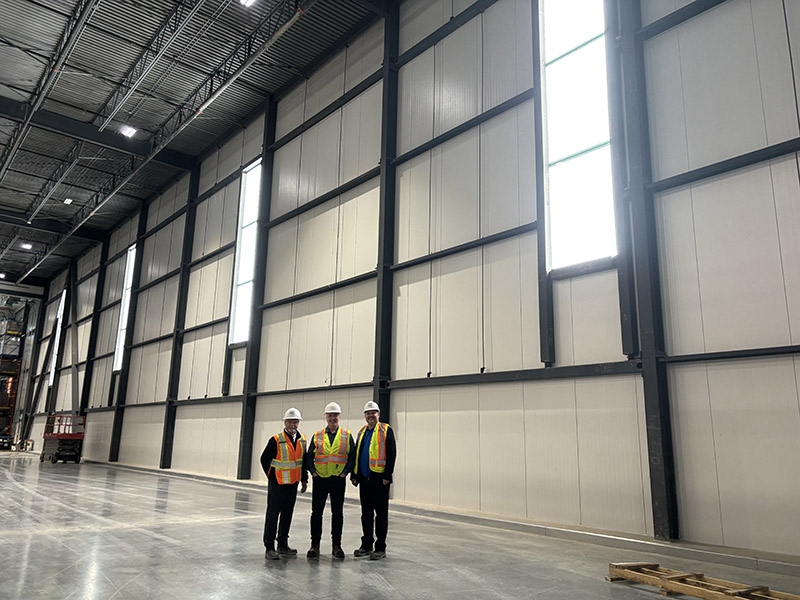A New Era Is Here
Advancing Sustainability and Wellness in Pre-Engineered Metal Buildings

Pre-Engineered Metal Buildings, or PEMBs, have surged in popularity owing to their cost-effectiveness and rapid installation. These structures, characterized by their modularity and standardization, have become a staple in contemporary construction. However, while PEMBs offer undeniable advantages, a pressing need exists to address certain shortcomings, particularly in areas such as daylighting and energy efficiency.
PEMBs are cost-effective, but challenges with daylighting must be overcome
Central to the appeal of PEMBs is their modular nature and adherence to standardized components. Manufacturers specify window sizes and spacings to ensure seamless integration during construction. This standardization not only streamlines the building process but also enables cost-effective solutions. Standardization of sizing streamlines the entire engineering, supply chain and erection of the buildings, which helps in speed and cost when compared to brick, sticks and mortar construction.
Yet, in the pursuit of affordability and efficiency, considerations for occupant well-being and environmental sustainability sometimes take a back seat.
One of those potential shortcomings in PEMBs can be daylighting. Access to natural light and external views is essential for creating healthy and productive indoor environments. Studies have consistently shown that exposure to natural light positively impacts mood, productivity and overall well-being. However, implementing effective daylighting solutions in PEMBs presents unique challenges. Historically, achieving glare-free illumination has been costly and complex, often incompatible with the fast-paced, budget-conscious nature of PEMB construction. This is because the materials and systems are configured and constructed in a “bespoke” fashion unsuitable for standardization of construction and supply.
Nevertheless, the imperative to prioritize sustainability and wellness in building design cannot be overstated. Sustainable buildings not only benefit occupants but also contribute to broader environmental goals, such as reducing energy consumption and mitigating climate change. Incorporating green building principles into PEMBs requires innovative solutions that align with the industry’s modularity and standardization.
Solar illumination products offer potential to enhance PEMB sustainability
Efforts to leverage best-in-class technology in modular solar illumination products hold immense promise for enhancing the sustainability and livability of PEMBs. By harnessing natural light, building owners can reduce energy costs since using free natural light as primary lighting reduces the cost of carbon-intensive artificial lighting.
Use of natural light can also improve occupant comfort, and enhance the aesthetic appeal and property value of their structures. Moreover, investments in energy-efficient technologies — like solar power ground pump heating and cooling sources, as well as daylighting—often yield long-term financial benefits, further incentivizing the adoption of sustainable building practices.
Collaboration among various stakeholders is essential to driving meaningful change in the PEMB industry. Architects, engineers, manufacturers and building owners must work together to develop and implement sustainable design solutions. This collaborative approach not only fosters innovation but also ensures that buildings meet the diverse needs of its occupants while minimizing its environmental footprint.
The rising demand for PEMBs presents a unique opportunity to reimagine the future of construction, use cases and an overall paradigm shift in how we think about these structures in virtually every way. By prioritizing sustainability, wellness and innovation, stakeholders can create metal buildings that not only meet the needs of today but also contribute to a more sustainable and resilient built environment for future generations.


